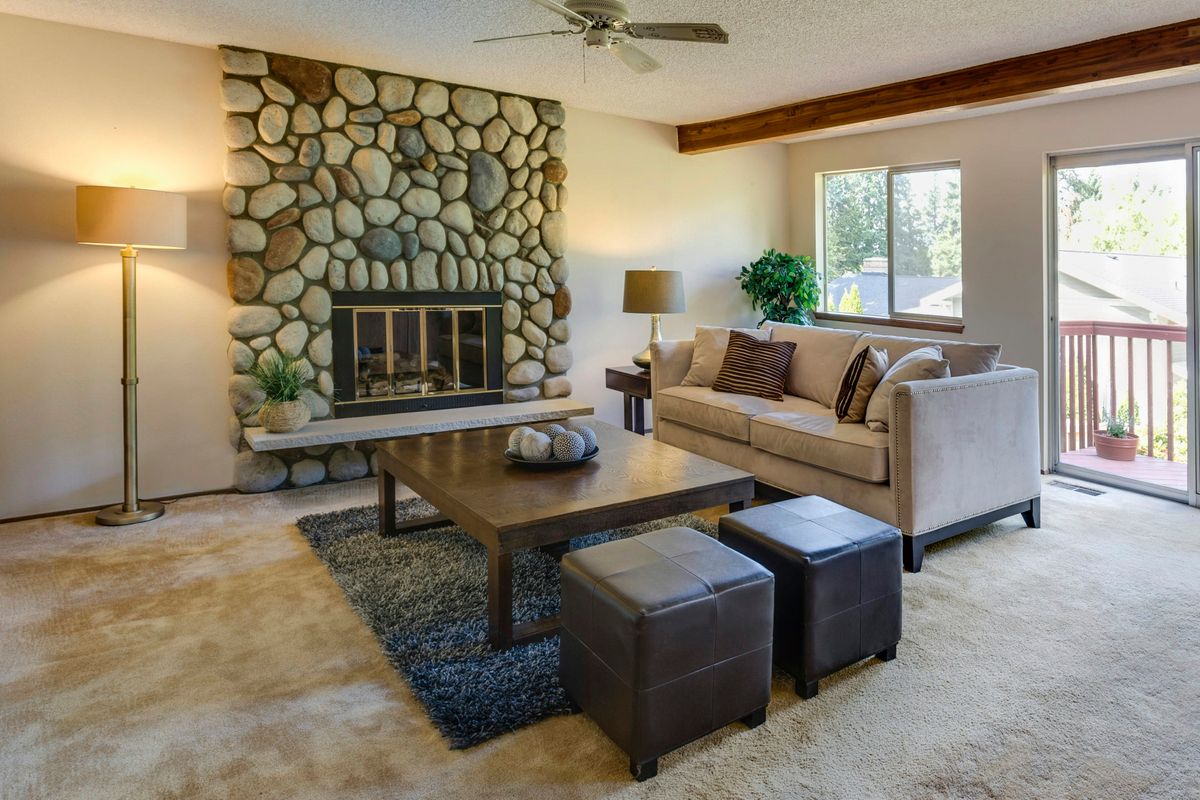Selecting the perfect ceiling fan for your living room can enhance both the comfort and style of the space. With a variety of styles, sizes, and features to choose from, it’s important to consider factors like decor matching, performance optimization, and energy efficiency. This article will guide you through the key considerations when choosing a ceiling fan for your living room.
Key Takeaways
- Choose a ceiling fan style that complements your existing decor to create a cohesive look.
- Consider blade material for durability and performance, with options like wood, metal, or plastic.
- Select the right size fan for your living room based on the room’s dimensions for optimal airflow.
- Understand CFM ratings to ensure the fan can effectively circulate air in the room.
- Properly install the ceiling fan to maximize its performance and longevity.
Choosing the Right Style

Matching Your Decor
When it comes to blending your ceiling fan with your living room decor, it’s all about harmony. You want your fan to complement the room’s aesthetic, not clash with it. Think of your ceiling fan as a piece of furniture that can either tie the room together or stick out awkwardly.
- Farmhouse Style: Go for fans with a rustic, wooden finish.
- Modern Minimalist: Sleek lines and a monochrome palette are your friends.
- Bohemian Chic: Look for fans with a natural texture or colorful accents.
Remember, the goal is to enhance your living space, not overwhelm it. Websites like Farmhousehub offer a plethora of stylish ceiling fan ideas to inspire you. Whether you’re aiming for cohesion or contrast, the right fan can elevate your living room’s charm and make it feel more inviting.
Considering Blade Material
When it comes to ceiling fans, the blade material is not just about looks; it’s about performance and durability too. Wooden blades bring a classic, warm aesthetic to your living room, but they might not be the best choice for humid environments. On the flip side, metal blades are sleek and modern, but they can be noisy and prone to corrosion.
ABS plastic blades are a versatile option, often designed to mimic the look of wood or metal. They’re durable, lightweight, and work well in a variety of settings. Plus, they’re easier to clean and maintain, ensuring your fan continues to operate smoothly over time. Here’s a quick comparison:
- Wooden Blades: Classic look, potentially less durable in humidity.
- Metal Blades: Modern, may corrode or be noisy.
- ABS Plastic Blades: Versatile, durable, and low maintenance.
Remember, the right blade material can enhance your fan’s efficiency and longevity. For instance, ABS plastic blades can even be designed with a realistic timber-grain finish! So, consider the climate and your lifestyle when making your choice to maintain a strong and reliable fan.
Selecting the Right Size
When it comes to ceiling fans, size does matter. A fan that’s too small won’t cool your room effectively, while one that’s too large could overwhelm the space. Finding the perfect balance is key to both aesthetics and functionality. Generally, a room measuring up to 75 square feet calls for a fan with a diameter of 29 to 36 inches. For spaces up to 175 square feet, look for a fan that spans 42 to 48 inches. And for those larger living rooms stretching beyond 175 square feet, a fan of 52 inches or more will be most effective.
But it’s not just about the numbers; the height of your ceiling also plays a crucial role. Standard ceilings might do well with a fan that hangs lower, whereas vaulted or high ceilings may require an extension rod to ensure the fan is positioned optimally for cooling. Here’s a quick reference:
- Standard Ceiling (8 feet): No extension rod needed
- High Ceiling (9 feet or more): Use a 6 to 24-inch extension rod
- Vaulted Ceiling: Length of rod varies based on ceiling angle and height
Remember, the goal is to enhance comfort and style in your living room. So, take the time to measure your space and consult a size guide to find the best fan for your space. It’s a simple step that can make a big difference in how you enjoy your home.
Optimizing Performance

Understanding CFM Ratings
When you’re on the hunt for a ceiling fan that promises a breezy reprieve from summer heat, CFM ratings are your go-to metric. CFM stands for Cubic Feet per Minute, and it measures how much air the fan moves. Think of it as the fan’s power to create wind-chill bliss in your living room.
But what’s a good CFM to aim for? Well, a ceiling fan’s efficiency is largely determined by its CFM rating. Generally, fans with CFM ratings of at least 5,000 are considered effective. They’re the ones that can transform a stuffy space into your own personal oasis. Here’s a quick breakdown:
- Under 3,000 CFM: Best for small or auxiliary spaces
- 3,000 to 4,999 CFM: Good for average-sized rooms
- 5,000 CFM and above: Ideal for larger living spaces
Remember, it’s not just about the CFM. The blade pitch and motor strength also play pivotal roles. A blade pitch of 11 to 15 degrees, paired with a powerful motor, will ensure your fan moves the most air, keeping you cool as a cucumber.
Adjusting Fan Speeds
Getting your ceiling fan to whirl at the perfect speed is like finding the sweet spot on your comfiest couch. It’s all about that just-right breeze that doesn’t turn your living room into a wind tunnel. But hey, sometimes you might want to crank it up a notch, especially on those scorching summer days, or maybe slow it down when you’re looking for a gentle draft.
Here’s a pro tip: the direction your fan spins matters too. In the summer, you’ll want it running counterclockwise to push cool air down. Flip the switch and have it run clockwise at a lazy pace during winter to help pull up the cool air and mix it up with the warmer air above. No more messing with the thermostat every five minutes!
And if you’re feeling like your fan’s got more to give, a little TLC goes a long way. Keep those blades clean and balanced, and you might just see a boost in performance. Remember, a well-maintained fan is a happy fan!
Installing the Fan Properly
Once you’ve got your fan properly installed, it’s time to think about how it can do more than just circulate air. Adding a few extras can significantly boost your living room’s comfort and functionality. For instance, many fans come with the option to add light fixtures, which can help you set the mood and save space by combining two key room features into one.
Here’s a quick checklist to ensure you’re getting the most out of your ceiling fan:
- Consider adding light fixtures if your living room lacks natural light or you want to create ambiance.
- Look into remote controls to adjust your fan and lights without getting up—perfect for those lazy Sunday afternoons.
- Don’t forget about energy efficiency; opting for an Energy Star-rated fan can save you money on your utility bills in the long run.
Remember, a well-chosen ceiling fan does more than just keep you cool; it integrates into your living space to enhance both safety and style. Fire-rated access doors aren’t just for industrial settings; they’re a smart safety feature for any home. And just like transforming a kitchen with must-have accessories, the right fan accessories can elevate your living room from functional to fabulous.
Enhancing Comfort and Functionality

Adding Light Fixtures
When it comes to enhancing the ambiance of your living room, adding a light fixture to your ceiling fan can be a game-changer. Not only does it serve the dual purpose of illumination and air circulation, but it also adds a touch of elegance to your space.
Many ceiling fans are designed to accommodate light kits, making it a straightforward DIY upgrade. If you’re handy, you might appreciate the convenience of a hook included in many kits that allows you to hang the fixture close to the electrical box, freeing up both hands for wiring—just like the method described in ‘How To Wire a Ceiling Fan With a Light: 5 DIY Methods’.
However, if DIY isn’t your thing, no worries! There’s a variety of pre-installed options that can fit your style and needs. Here’s a quick rundown of what to consider when selecting a fan with a light fixture:
- Light Bulb Type: LED, CFL, Halogen, or Incandescent?
- Brightness: How much light do you need for your space?
- Color Temperature: Warm, cool, or daylight?
- Control Options: Pull chain, wall switch, or remote control?
Remember, the right lighting can make all the difference in creating a cozy and inviting atmosphere. So, take your time to find the perfect combination that suits your living room’s vibe.
Using Remote Controls
In the quest for the ultimate convenience in your living room, remote controls for ceiling fans are a game-changer. They allow you to adjust the fan speed, lighting, and even set timers without ever leaving the comfort of your couch. Imagine not having to interrupt your relaxation or entertainment to pull a chain or flick a switch.
When selecting a remote control, compatibility is key. For instance, the AirPro Unfinished Universal Ceiling Fan Remote Control is a versatile option that offers fan speed control, a full range light dimming, and handy timer settings of 2, 4, and 8 hours. It’s a universal solution that promises to make your life easier.
On the other hand, if you own a JONATHAN Y ceiling fan, you’ll want to opt for the dedicated remote control designed specifically for these models. The package includes both the remote control and the receiver, ensuring a seamless integration with your fan. Keep in mind, this item is a final sale and cannot be returned, so be sure of your choice before purchasing.
Here’s a quick comparison of the two options:
| Remote Control | Compatibility | Features | Timer Options | Return Policy |
|---|---|---|---|---|
| AirPro Universal | Universal | Speed control, Light dimming | 2, 4, 8 hours | Standard |
| JONATHAN Y | JONATHAN Y fans only | Speed control, Receiver included | N/A | Final Sale |
Remote controls not only add a layer of convenience but also enhance the functionality of your ceiling fan. With the right one in hand, you can tailor your living room’s atmosphere to your exact preferences with minimal effort.
Considering Energy Efficiency
When it comes to keeping your living room cool, energy efficiency is a big deal. Ceiling fans are a smart choice for those looking to save on energy bills without sacrificing comfort. But not all fans are created equal in the efficiency department. To get the most bang for your buck, you’ll want to look for models that have the ENERGY STAR certification. These fans are rigorously tested to ensure they’re truly energy savers.
Upgrading to a fan with a DC motor can also make a significant difference in power consumption. DC motors are not only quieter but also use less electricity compared to their AC counterparts. Here’s a quick comparison to show you the potential savings:
| Motor Type | Power Consumption (Watts) | Efficiency Gain |
|---|---|---|
| AC Motor | 75-90 | Standard |
| DC Motor | 15-30 | High |
Remember, while ceiling fans do consume electricity, they’re generally more energy-efficient than other cooling options. By choosing the right fan, you can enjoy a breezy living room without the worry of high energy costs.
Frequently Asked Questions
What style of ceiling fan should I choose to match my decor?
Consider selecting a ceiling fan that complements the overall style and color scheme of your living room. This can enhance the aesthetic appeal of the space.
How does blade material impact the performance of a ceiling fan?
Blade material can affect the efficiency and noise level of a ceiling fan. Opt for blades made of high-quality materials for better performance.
What size of ceiling fan is suitable for a living room?
Choose a ceiling fan size that is proportional to the dimensions of your living room. A fan that is too small may not provide sufficient airflow, while a fan that is too large can be overpowering.
What do CFM ratings indicate about a ceiling fan’s performance?
CFM (Cubic Feet per Minute) ratings measure the airflow efficiency of a ceiling fan. Higher CFM ratings indicate better air circulation and cooling capabilities.
How can I adjust the speed of my ceiling fan for optimal comfort?
Most ceiling fans come with multiple speed settings that can be adjusted using a remote control or a pull chain. Experiment with different speeds to find the most comfortable setting.
What are some energy-efficient features to look for in a ceiling fan?
Look for energy-efficient ceiling fans with features such as LED light fixtures, DC motors, and ENERGY STAR certification. These features can help reduce energy consumption and lower utility costs.
